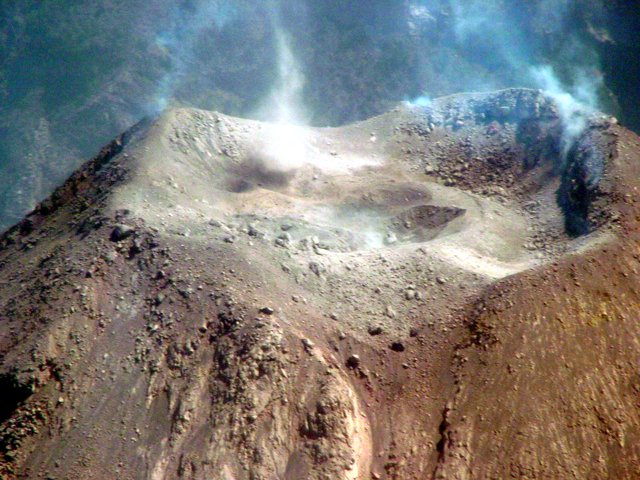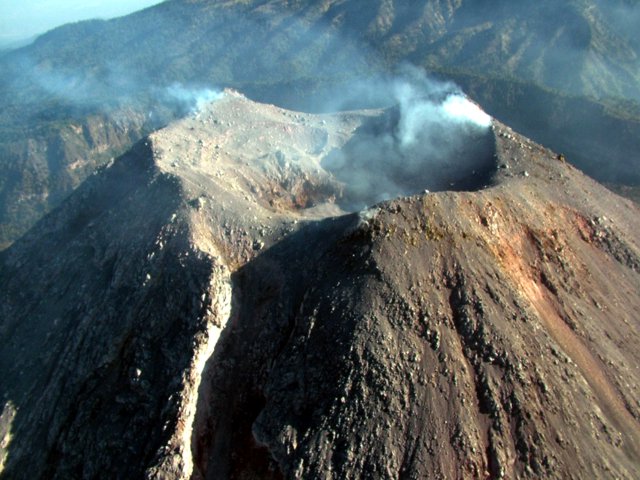|
Recent Significant Eruptive
Activity
Summary
According to the Global
Volcanism Program, run by the Smithsonian Institution,
significant eruptions occurred most recently in 2005,
particularly from March to June. It appears that this
year marked a substantial increase in the intensity of
Colima's activity, as the number of days in which ash plumes
rose about 2km over the summit increased from 3 days in 2000
to 31 days in only the first half of 2005. Large,
notable eruptions began in March 2005, producing pyroclastic
flows and eruption plumes of ash that continued into July.
At the peak of the eruptive activity, from around April to
June, pyroclastic flows reached distances of about 5.1km,
and columns of ash rose about 10km above Colima's summit.
These eruptions destroyed the lava dome that had formed in
the eruptions of September-November 2004, replacing it with
dome and unconsolidated material for a period until larger
eruptions left it an empty crater that measured about 260m
across and 30m deep4.
Before
After


Fig. 1 Colima on
May 25 2005 before the accumulated material was expelled by
a large eruption.
Fig. 2 Colima on June
16 2005 following the large eruption that cleared the dome.
VEI (Volcanic
Explosivity Index)
3
A VEI of 3 indicates a rather
severe eruption of a frequency that normally does not exceed
yearly occurrence. This classification is assigned to
eruptions emitting ash plumes ranging in height from 3-15 km
and is appropriate due to the emission of at least one ash
column of about 10 km in altitude. That part of an existing
lava dome was destroyed, as well as the presence of
extensive pyroclastic flows, are also testament to its
severity. However, a VEI of 2 could be assigned to a
substantial amount of the activity, due to its explosive,
yet less intense nature in terms of mass of ejecta, plume
height, and pyroclastic flow length.
Mercalli
Classification
Vulcanian
This eruption was classified
by the Smithsonian Institution as Vulcanian. This
classification was assigned due to:
1. The explosivity, rather
than effusiveness, of the eruption, which rules out Hawaiian
and most Strombolian eruptions
2. The violent ejection of
tephra, including old material and new ash, several
kilometers into the atmosphere, dispersing it over a vast
area but not the extent of a Plinian eruption.
3. The presence of
pyroclastic flows. |